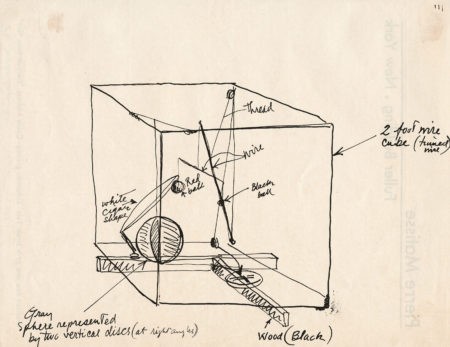



I am very much interested in developing a sort of ballet of mine—and devising the means of recording it so that it can be reproduced. The backgrounds can be changed—and the lighting varied. The discs can move anywhere within the limits of the frame, at any speed. Each disc
and its supporting pulleys is in a separate vertical plane parallel to the frame. The number of discs can be increased indefinitely—depending on the necessary clearances. In addition to discs there are coloured pennants (of cloth), with weights on them, which fly at high speed—and various solid objects, bits of hose, springs, etc. […] I had this in Paris the spring of 1933 and showed it to Massine— along with many other things, and it’s what I wanted to do for the Ballets Russes. Of course the real problem to magnify the movement to a full sized proscenium—but I can see various ways of obtaining it.
Following a visit in October of 1930 to Piet Mondrian’s studio, where he was impressed by the environmental installation, Calder made his first wholly abstract compositions and invented the kinetic sculpture now known as the mobile. Coined for these works by Marcel Duchamp in 1931, the word “mobile” refers to both “motion” and “motive” in French. He also created stationary abstract works that Jean Arp dubbed “stabiles.”